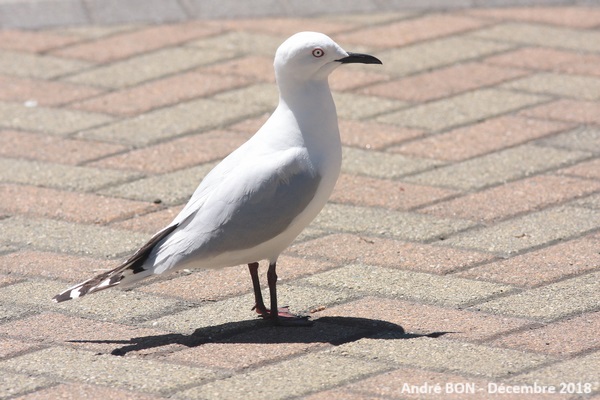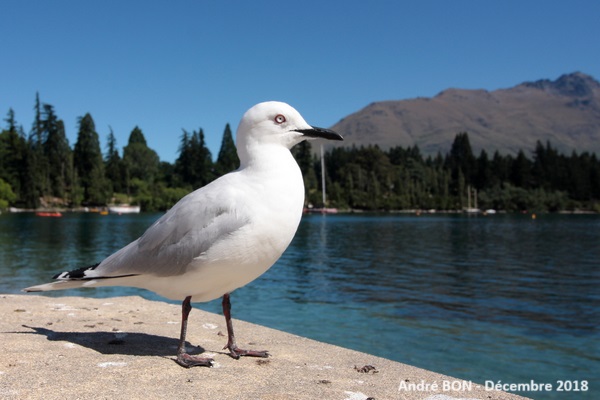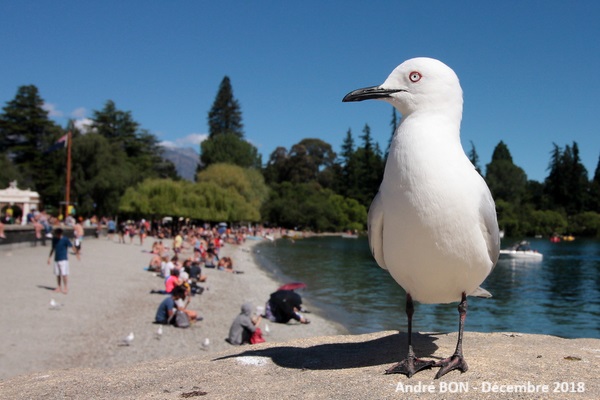



| Black-billed Gull (Chroicocephalus bulleri (Hutton, 1871)) |




|
|
Scientific name: Chroicocephalus bulleri (Hutton, 1871) Common name: Black-billed Gull Other names: Buller's Gull. Maori name: Tarapuka. French name: Mouette de Buller Order: Charadriiformes Family: Laridae Size: Body size: 35 to 38 cm; Weight: 190 to 270 g; Wingspan: 81 to 96 cm. Habitat: Banks of lakes and rivers during the breeding season, sea coasts, wet meadows during the internuptial period. Food: Fish, marine or terrestrial invertebrates, detritus, seeds and berries. Nesting: Black-billed Gulls nest in colonies. The nests, located on the ground, are small depressions lined with twigs. There are one to three eggs per clutch. Migration: Many Black-billed Gulls migrate towards sea coasts after the breeding season. Geographic area: Endemic to New Zealand. |
The Black-billed Gull has a white head, body and part of its wings. The back and wings are very light silvery grey. The outer primaries are white with a small black tip then white. The bill is black and thin. The eyes are white and finely outlined with red. During the interbreeding period the base of the bill becomes reddish and there may be a dark spot near the eye. Juveniles have dark eyes. The species has declined significantly over the past 30 years and is now considered endangered. |
| [To know more about the Black-billed Gull] [Next picture] [Top] |

|
Black-billed Gulls are not shy birds and you can observe them in urban areas where they come to beg for food. |
| [To know more about the Black-billed Gull] [Next picture] [Previous picture] [Top] |

|
There are two species of gulls in New Zealand, red-tipped bill Red-billed Gull, black-tipped bill Black-billed Gull. |
| [To know more about the Black-billed Gull] [Next picture] [Previous picture] [Top] |

|
While preparing for my trip to New Zealand I came across a close-up photo of a Kea, taken at a wide angle, and giving a superb view of both the bird and its environment. This type of shooting is only possible by approaching very close to the photographed bird, approximately 20 cm. I had in mind to try to reproduce this kind of shot and it was a very not shy Black-billed Gull that allowed me to do it. |
| [To know more about the Black-billed Gull] [Previous picture] [Top] |

|
Same type of shot as before but with an even better position of the Black-billed Gull and a background view of Queenstown beach two days before Christmas. |